Question 1. A ball is dropped vertically from a height h above the ground .It hits the ground and bounces up vertically to a height h/2.Neglecting subsequent motion and air resistance ,its velocity v varies with the height h as
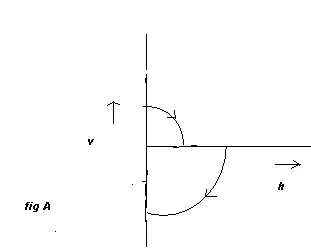
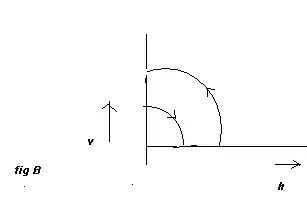
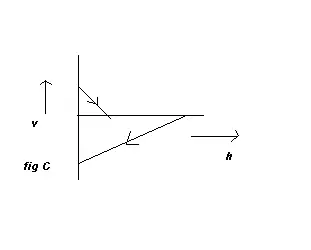
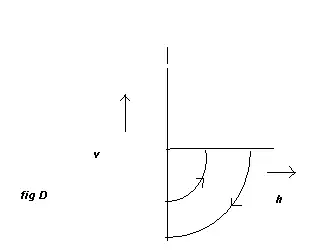
Solution(1):
. Before hitting the ground ,the velocity v is given by v2=2gd Which is a quadratic equation and hence parabolic path. Downward direction means negative velocity , After collison ,the velocity becomes positive and velocity decreases Further v12=2g(d/2)=gd Therefore v=v1√2 As the direction is reversed and speed is decreased, Hence (a) is the answer
Question 2. The displacement -time graph of a moving particle is shown below.The instantaneous velocity of the particle is negative at the point
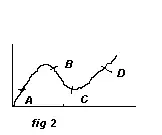
a. C
b. D
c. E
d. B
Solution(2):
. The instantaneous velocity is given by the slope of the displacement time graph.
Since slope is negative at point B, instantaneous velocity is negative at B
Hence (d) is correct
Question 3.The velocity -time graph of a moving particle is shown below.Total displacement of the particle during the time interval when there is nonzero acceleration and retardation is
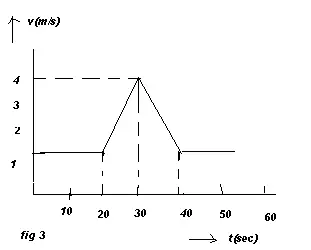
a. 60m
b. 40m
c. 50m
d. 30m
Solution(3):
. Acceleration is given by the slope of the velocity time graph
Non zero acceleration happened in the time interval 20 to 40 sec as the slope of the graph is non zero in that time interval
Now displacement in that interval is given by the area enclosed the v-t curve during that interval
So area=(1/2)20*3 +20*1=50m
Hence (c) is correct
Question 4. Figure below shows the displacement -time graph of two particles.Mark the correct statement about their relative velocity
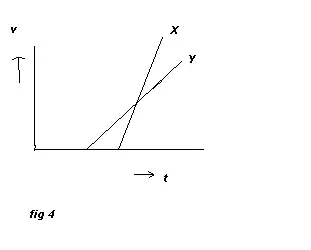
a. It first increases and then decreases
b. It is a non zero constant
c. it is zero
d. none of the above
Solution(4):
. The instantaneous velocity is given by the slope of the displacement time graph.
As slope of both the particle displacement time graph is constant.That means there individual velocities are constant.
So relative velocity is also constants
so it is a non zero constant as they have different velocity
Hence (b) is correct




Solution(1):
. Before hitting the ground ,the velocity v is given by v2=2gd Which is a quadratic equation and hence parabolic path. Downward direction means negative velocity , After collison ,the velocity becomes positive and velocity decreases Further v12=2g(d/2)=gd Therefore v=v1√2 As the direction is reversed and speed is decreased, Hence (a) is the answer
Question 2. The displacement -time graph of a moving particle is shown below.The instantaneous velocity of the particle is negative at the point

a. C
b. D
c. E
d. B
Solution(2):
. The instantaneous velocity is given by the slope of the displacement time graph.
Since slope is negative at point B, instantaneous velocity is negative at B
Hence (d) is correct

a. 60m
b. 40m
c. 50m
d. 30m
Solution(3):
. Acceleration is given by the slope of the velocity time graph
Non zero acceleration happened in the time interval 20 to 40 sec as the slope of the graph is non zero in that time interval
Now displacement in that interval is given by the area enclosed the v-t curve during that interval
So area=(1/2)20*3 +20*1=50m
Hence (c) is correct
Question 4. Figure below shows the displacement -time graph of two particles.Mark the correct statement about their relative velocity

a. It first increases and then decreases
b. It is a non zero constant
c. it is zero
d. none of the above
Solution(4):
. The instantaneous velocity is given by the slope of the displacement time graph.
As slope of both the particle displacement time graph is constant.That means there individual velocities are constant.
So relative velocity is also constants
so it is a non zero constant as they have different velocity
Hence (b) is correct
0 comments:
Post a Comment